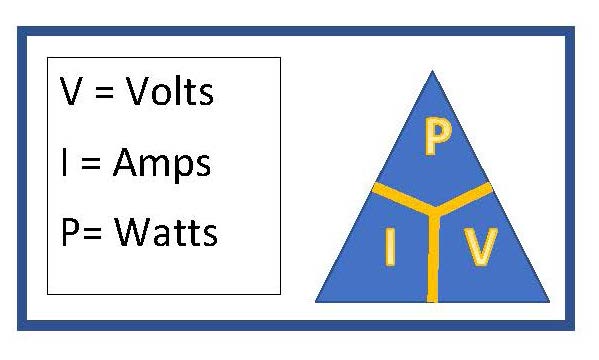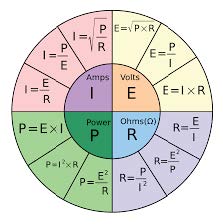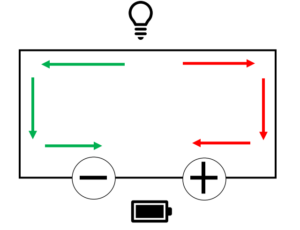49 Watt’s Law
Watt’s law defines the relationship between power, voltage and current and states that the power in a circuit is a product of the voltage and the current. There are many practical applications of Watt’s law, and the formula to calculate Watt’s Law is P = IV.
People often ask, what is the difference between Watt’s law and Ohm’s law? While Ohm’s law defines the relationship between resistance, voltage, and current in a circuit; Watt’s law defines the relationship between power, voltage, and current. These formulas can also be used to derive several other formulas.



In this DC circuit, the switch is closed (turned ON).
- Voltage is the power source—the “potential difference” between the battery’s two poles—is activated, creating pressure that forces electrons to flow, as current, out the battery’s negative terminal.
- Current reaches the light, causing it to glow.
- Current returns to the power source.
A household AA alkaline battery, offers 1.5 V. Typical household electrical outlets offer 120 V. The greater the voltage in a circuit, the greater its ability to “push” more electrons and do work.

